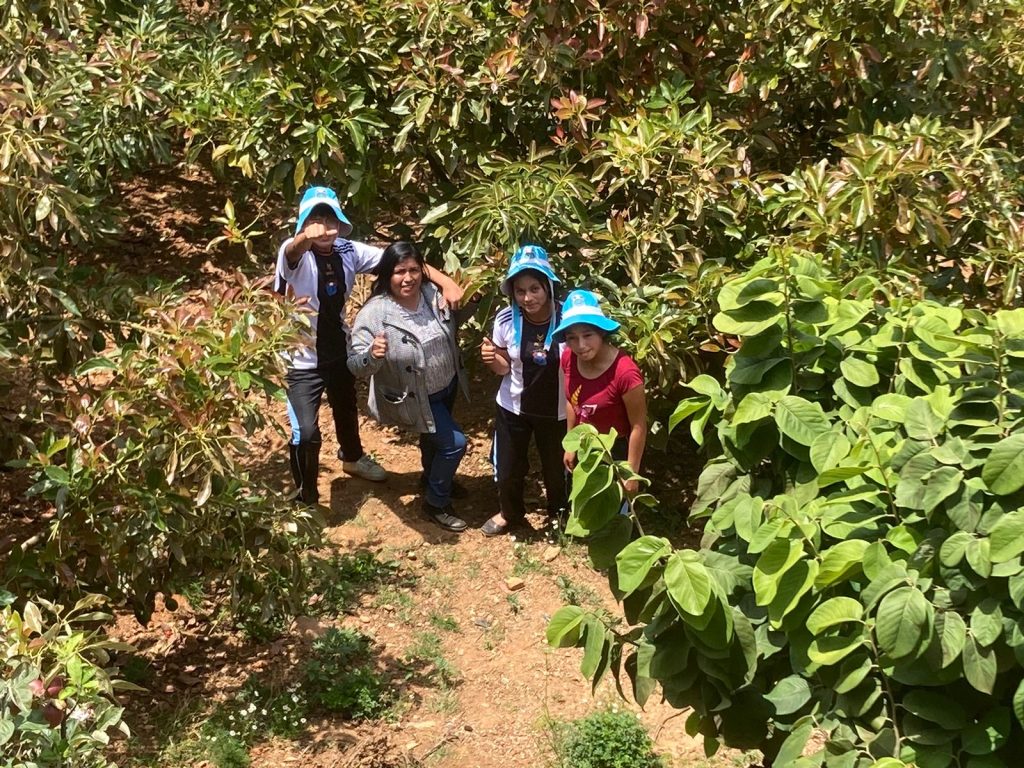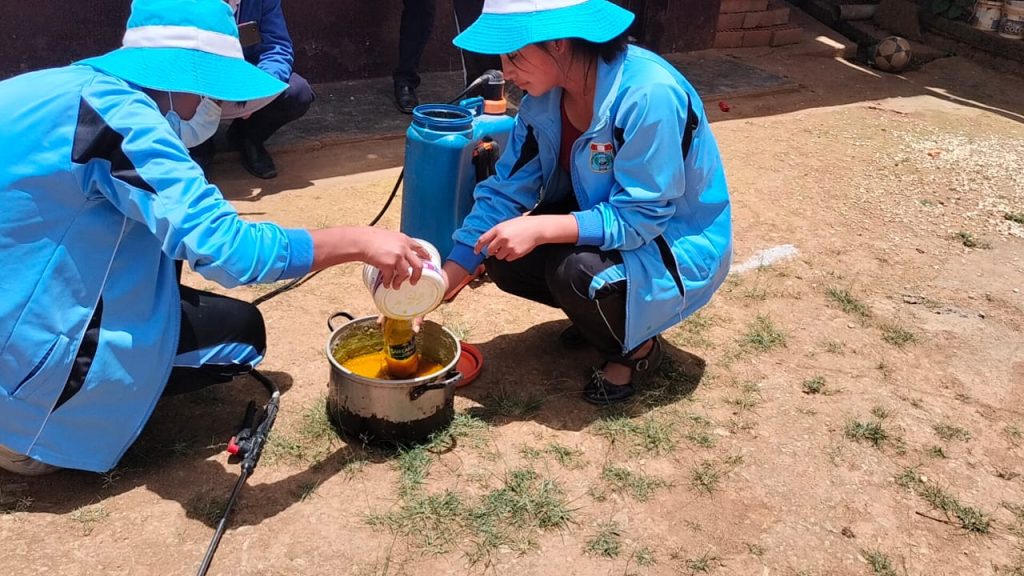In a rural area of Peru, a teacher and three students identified that using a sulfocalcium broth (made with sulfur and calcium oxide) can be much more effective and sustainable than commercially available chemical pesticides. Through testing and guidance from agriculture and technology professionals, the result was that it is possible to improve the production of avocados, one of the main means of subsistence in the population center (administrative subdivision in Peru) of Socos, where they live. In addition to helping the population, this initiative was the winner of the 10th edition of Solve for Tomorrow Peru.
“Sulcac Orgánico” (or Organic Sulcac, in English) is the name of this project from the Victor Raúl Haya de La Torre State School. The population center of Socos is in the Department of Huancavelica and is a region where the majority of people make their living from agriculture. The students are often children of rural producers and live in nearby towns, needing to travel for an hour or more (by walk or van) to get to class.
This is also the reality of the students involved in the project, who are 16 and 17 years old and are in the fourth grade of secondary education, that is, the penultimate year of compulsory schooling. The mediator teacher, Norca Salazar, is also from nearby, within the Lambras district, and by living in this region, she became sensitive to the difficulties of farm workers.

The educator teaches Science and Technology lessons and already has experience developing this type of project in other schools. When she started at the Victor Raúl school, she proposed that they dedicate themselves to programs like Solve for Tomorrow. “I saw that sometimes the community members went to the city searching for work and there they had more needs. And I asked myself: why don’t they improve production to be able to compete with other larger companies that are dedicated to export avocados?” the teacher questioned.
With this reflection in mind, Salazar discussed with the three students who offered to participate in the project and together they began to try to discover what was missing for local production to grow and become 100% organic. “A student said that here there were many red mite that attack the plantations and so we investigated more to understand why this was happening and how we could combat it without degrading the environment,” she recalls.
Fieldwork and allies were crucial
The first step was to visit plantations in the community, especially one from a friend of one of the young people, someone who became an ally. It was there that they did most of the testing, examining what could keep the spiders away and frequently observing the effects of the products on the avocado trees.
Meanwhile, they will talk with fifth-grade high school students about how bio-controllers, which are the natural enemies that combat pests, are disappearing, and what the effects that crops suffer from climate change.

The group even gained one more ally, an engineer, a friend of one of the student’s parents. “He came predisposed to school, he even gave talks to the entire high school about environmental pollution and the importance of using organic products. He told them about the sulfocalcium broth and that was our starting point,” said the teacher.
Added to this orientation was an in-depth research on natural alternatives to agrochemicals. After testing other types of organic compounds, sulfocalcium broth proved to be the best alternative: it affects the nervous and respiratory system of the red mite and is therefore a very effective form of control.
The broth is produced with two basic components: sulfur, which is purchased in the district, and lime (calcium oxide) which the equipment itself produces from limestone, a type of sedimentary rock that is easily found locally. The amounts of each element vary according to the type of use, but the bottle of this natural solution is much cheaper than one of the common pesticides, reaching 40 times cheaper.
The leaves of the avocado trees that have a lot of red mites turn brown and we realized that they had changed color. Now the brown ones fell and were born again green, healthy, she explains.
This indicated that they had managed to control the pest after a few doses of application and that the prototype was approved by testing. Another benefit discovered is that the sediment (generated when the broth was boiled) can be used to make grafts when pruning, with the function of healing the plants.
Greater confidence in young people
As they live in a rural area that is difficult to access, the students of “Sulcac Orgánico” initially thought that they would not be able to compete with larger schools in urban contexts. But they persevered, with the teacher’s constant motivation, and now that they have won the Solve for Tomorrow program, they feel much more confident and willing to dedicate themselves to scientific research. “They are eager to continue studying and do more for the community,” Salazar highlights.
Now they continue with new ideas. “The students are excited; they plan to improve the prototype and perhaps join other teams from other projects. They are already investigating, for example, how to replace the bottles used to package the solution,” reveals the professor. The goal is also to expand visits and work in neighboring communities and cities.



